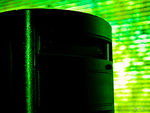File Management and Protection/Data Protection/Computer viruses
| File Management and Protection | |
|---|---|
| Data Protection | Introduction | Information security | Privacy issues | Backup techniques | Computer viruses | Key points | Assessment |
Computer viruses
A computer virus is a program that is deliberately created to cause annoyance or alter or delete data. Some viruses cause computer systems to slow down to the point where they are not usable. One of the features of viruses is that they are designed to replicate and spread.
Types of Viruses
- Trojan: A Trojan (or Trojan horse) is a virus that hides itself inside another legitimate program. When the program is used, the virus is released and can begin its work of replication and annoyance or damage.
- Worm: A Worm is a program that replicates itself over and over in the computer’s memory until the computer can barely function. One of the signs of invasion by a worm is the slowness of computers.
- Macro-viruses: Macro-viruses make use of a special customisation feature in applications called macros. Macros allow you to create mini-programs to carry out certain tasks in your applications.
Spread of computer viruses
- downloads from the Internet
- pirated software
- in attachments to emails and in emails themselves
- in documents – macro-virus, described above, can be hidden in ordinary documents, spreadsheets and presentations.
Virus Protection
The actions of computer viruses were discussed in the previous section. The measures you can take to protect yourself against viruses will be discussed in the next section. One of the main measures to protect against viruses, anti-virus software, is discussed in this section.
Anti-virus software
Anti-virus software scans files for pieces of code, called signatures, which it recognises as part of a virus. Updating anti-virus software mostly involves updating the signatures file. This should be done on an as frequent as possible basis. This is even more the case when you receive files regularly from outside sources. The actual anti-virus program itself will be updated from time to time. These updates will include additional features and improved methods of scanning.
It is important to keep in mind that no anti-virus software is perfect. It is only as good as the techniques it uses for detecting viruses and the currency of the signature file. There is always the chance that a virus will go undetected. However, a good anti-virus system installed on your system is essential and will usually detect most viruses.
When a virus is detected, the software will attempt to remove the virus. This is called cleaning or disinfecting. It sometimes happens that the system can detect the virus but not get rid of it. In this case, you will usually be given the option of deleting or quarantining the infected file. When a file is quarantined, it is made unusable and so unable to spread the virus. A future update of the software may be able to remove the virus. If it can the quarantine is removed.
Best practices when downloading
There are a number of measures you can take to protect yourself from viruses:
- Install good anti-virus software and update it on a regular basis, for example at least once a month but preferably once a week. But always remember, anti-virus software is not perfect. It cannot be the only measure you take
- Enable the auto-protection feature on the anti-virus software to scan emails
- Be wary of emails from unknown sources, particularly if they contain attachments. Some very careful users delete emails they are unsure of without opening them
- Use an Internet Service Provider that scans emails before delivery
- Do not download files/software from unknown Internet sites
- Do not install pirated software.

